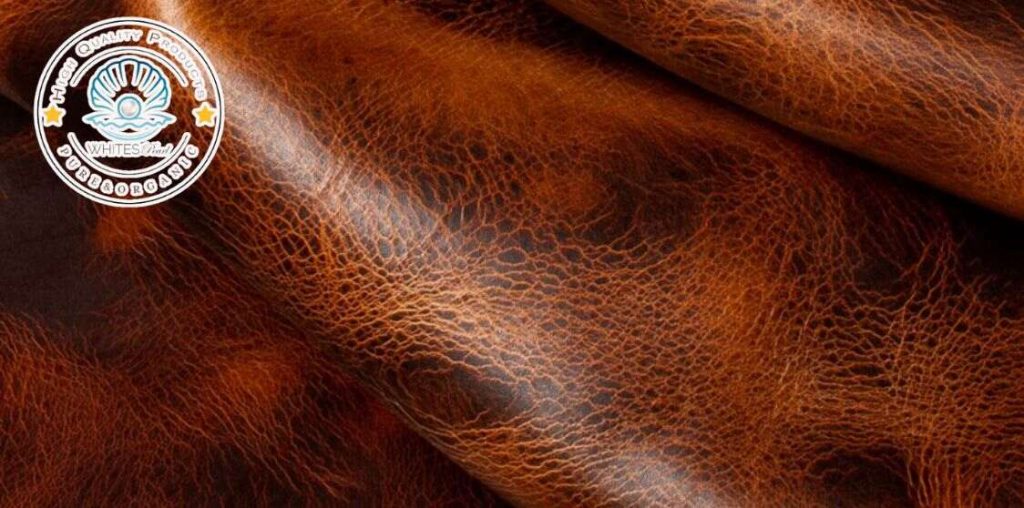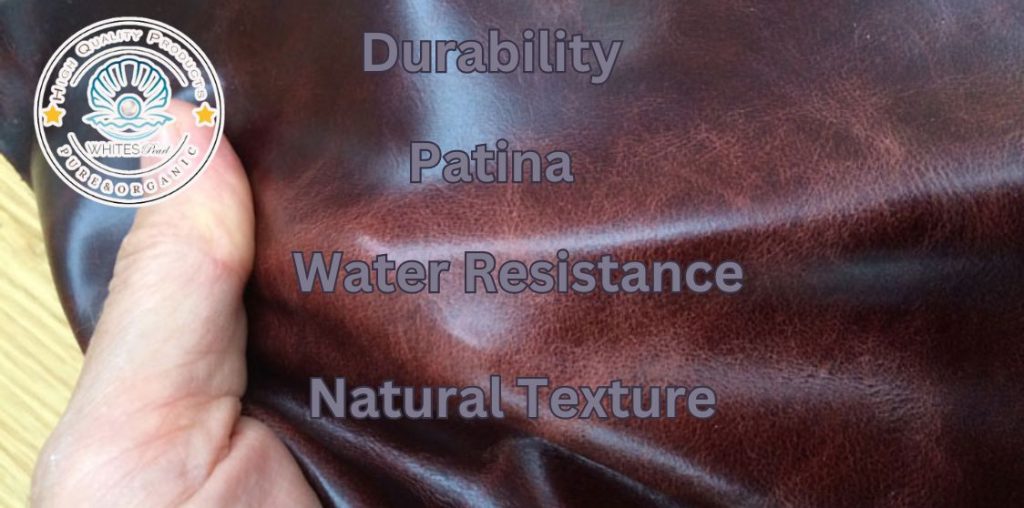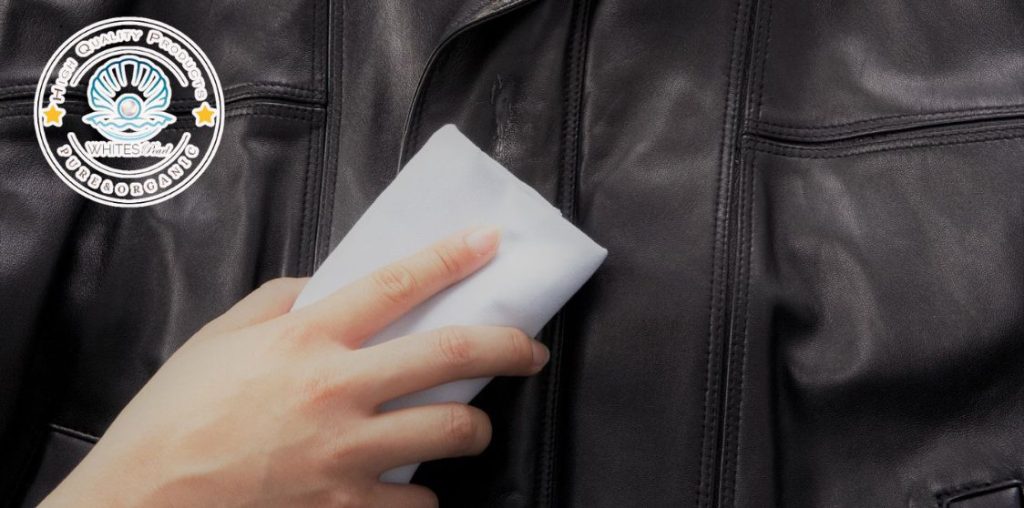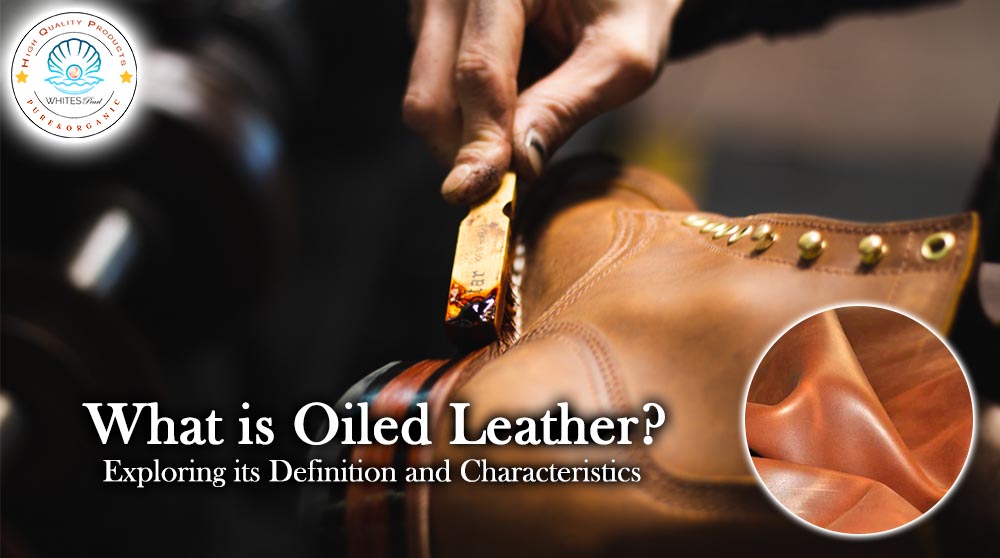
Leather is the epitome of charm, elegance, and grandeur. It is a material that is cherished for its durability, timeless appeal and elegance. Leather comes in numerous forms and finishes. Each type of leather possesses its own distinct characteristics, personality, and properties. Oiled leather is a type of leather that is well-regarded for exuding a unique charm as well as possessing alluring properties. This form of leather is quite popular among leather aficionados. In this article we will explore oiled leather and highlight its distinctive characteristics, unveiling the allure that makes it so popular.
Oiled Leather – A Quick Glance
The Ultimate Guide to Oiled Leather

Oiled Leather – Definition
Technically, all forms of leather are oiled leather because during the tanning processes, leather is oiled to incorporate in it, suppleness and durability. However, the term “oiled leather” that you will see in the description of some leather products means that this particular form of leather has been impregnated with a lot of oil. During the tanning process, oiled leather is treated with a large amount of oil and waxes. These oils penetrate deep into the layers of leather and give it a rich, slightly glossy, and supple surface.
Characteristics

Natural Luster – As oiled leather is impregnated with vast amounts of oil and waxes it possesses a natural sheen that adds more depth and character to the leather’s overall appearance. With time, as the leather ages, this luster intensifies and develops a rich patina that further enhances the allure and charm of the leather.
Flexibility and Suppleness – As a result of incorporating large amounts of oil in the leather, oiled leather becomes exceptionally soft and pliable. Due to its softness, oiled leather is quite comfortable to wear and nice to touch. With time, the leather beautifully molds to the body of the wearer or the shape of the objects.
Distinctive Smell – Oiled leather is lauded for its distinct, earthy aroma, that adds to its appeal. This scent is associated with the authenticity and quality of leather.
Water Resistant – Due to the large amounts of oils and waxes infused in the leather during the process of tanning, oiled leather possesses inherent water-resistant properties. These properties allow it to repel moisture, protecting leather from slashes and light rain.
Rich Color Variations – Oiled leather consists of deep and rich color tones, ranging from warm reddish hues to earthy browns. With time these colors tend to darken and become more vibrant, enhancing the appearance of leather.
Durability – Oiled leather is lauded for its durability which allows it to withstand wear and tear. Therefore, this leather is used for manufacturing workwear and rugged outdoor gear.
Softness – Apart from its durability, oiled leather is also coveted for its softness and pliability. As it is quite soft and comfortable, oiled leather is used for making clothes and accessories.
Patina Development – Just like other high-quality leathers, oiled leather also develops a beautiful patina as it ages, provided that it is well taken care of. This patina, which develops over time, enhances the leather’s character as well as appearance.
Natural Texture – Oiled leather possesses a more pronounced texture as compared to other forms of leather. One can easily see and feel the natural grain patterns of the leather as well as the imperfections on the hide that add to its character and allure.
Applications
Footwear – Most commonly, oiled leather is used in the manufacturing of sandals, shoes, and boots. This is because oiled leather is more durable and water-resistant. Moreover, its supple and soft texture provides the utmost comfort.
Accessories and Bags – Oiled leather is the most coveted form of leather for creating high-end items like wallets, bags, belts, as well as other small leather goods. Due to its luxurious feel and rich color, the items crafted from it exude opulence and lusciousness.
Furniture and Upholstery – Due to its comfortless and elegance, oiled leather is used for upholstery in furniture. It’s natural luster and durability make furniture timeless pieces that develop more elegance and beauty with time.
Apparel – As oiled leather is not only soft and glorious to look at, it also possesses high durability and water resistance properties, which make it an ideal leather for making clothing items like vests, jackets, etc.
Difference Between Oiled Leather and Leather
| Oiled Leather | Leather |
| Texture – Oiled leather is lauded for its soft and pliable texture that is smooth and comfortable to the touch. Due to its texture oiled leather effortlessly molds to the shape of the wearer’s body or the object that it covers. | Texture – When it comes to regular leather, its texture tends to vary. Depending on the type of leather and finish, the texture can range from smooth to textured, harboring characteristics like natural imperfections and grain patterns. |
| Appearance – Oiled leather possesses a district luster and sheen, boasting deep and rich color tones that tend to darken with age and become more vibrant. Also, due to oil treatment, this leather possesses a slightly glossy surface. | Appearance – Similar to texture, regular leather also harbors a wide range of appurtenances that depend on leather type and finish. Its appearance can range from, matte, to natural to glossy, with colors ranging from light to dark. |
| Water Resistance – The oils and waxes used during the tanning process, seep deep into the layers of the leather making it resistant to water. Due to its water-resistant properties, oiled leather can protect itself from minor splashes and light rain. | Water Resistance – As compared to oiled leather, regular leather is less water resistant. It can absorb moisture to some extent, however, will get damaged if exposed to heavy rain and prolonged contact with water |
| Scratch Resistant – When it comes to surface scratches, oiled leather is a lot more forgiving as compared to other forms of leather. Minor scratches on the leather can easily land into its texture and patina with time. | Scratch Resistant – Scratch resistance of regular leather depends on the type and finish of the leather. While some may be prone to wear and tear, other regular leather might be more durable. |
| Treatment – During the process of tanning, oil leather is subjected to a specific treatment that involves the application of large amounts of oil and waxes. These oils and waxes penetrate deep into the fibers and layers of leather, enhancing its suppleness, and durability. | Treatment – When it comes to treatment, regular leather does not go through the same oil or wax treatment as oiled leather. It is treated to small quantities of oil however and retains its natural leather texture. Regular leather may also be finished with pigments, dyes, and coating for color as well as protection. |
Caring and Maintenance

Cleaning Regularly – To preserve the beauty and elegance of your oiled leather, you need to clean it regularly. To clean oiled leather, apply a small amount of leather cleaner to a soft, lint-free cloth and wipe the surface of the leather. Once you are done cleaning, allow the leather or dry naturally for 24 hours.
Regular Conditioning – To preserve the durability of leather and maintain its suppleness as well as luster, condition it every 6 to 12 months. Opt for a leather conditioner from a reputable company and never use DIY leather conditioners or olive oil and they do more harm than good. To conditioner leather, first clean it, and then take a small amount of conditioner on a lint-free cloth. Massage the conditioner on the leather surface in gentle, circular motions. Leave the leather to dry naturally for 14 hours. After 24 hours, remove excess conditioner from the leather and check if it needs another coat of conditioner. If it does, repeat the same process again.
Protect from Extreme Conditions – Even though oiled leather is durable and resistant to water and scratches, it is vital that you protect it from prolonged exposure to water and sun. Sun can dry up the oils and waxes in the layers of leather leading to fading and dryness. Prolonged exposure to water can result in the leather becoming stiff, discoloration, and eventually deterioration.
Stay Away from Harsh Chemicals – Keep in mind not to use harsh cleaning products and chemicals on your oiled leather as they can strip away the natural oils of leather, leading to fading, and discoloration.
Preservation
In order for oiled leather to maintain its suppleness, longevity, and rich appearance, preservation is quite essential. With proper care and preservation, your oiled leather will develop a beautiful patina over time that will add to its elegance and grace. Below are some tips on how you can preserve your oiled leather products:
Regular Cleaning – To preserve the beauty of oiled leather, make a habit of cleaning it on a regular basis. To clean leather you can use a leather cleaner. Apply the leather cleaner on a lint-free cloth, and wipe the leather with it to remove dust, dirt, and stains. Keep in mind to avoid harsh chemicals and cleaners and they will harm your leather.
Leather Conditioning – Conditioning not only helps maintain the suppleness of leather but also replenishes lost oils. To condition your leather, opt for a high-quality leather conditioner, like Whites Pearl Leather Conditioner. Apply a small quantity of conditioner on a cloth and massage it gently on the leather. Before applying the conditioner, make sure to do a patch test.
Storing Leather – In order to preserve oiled leather, make sure to store it in a cool dry place, away from heat sources and sunlight. Also keep in mind to avoid damp and humid storage places, as moisture can lead to deterioration of leather.
Keep Leather Away from Water – Even though oiled leather is lauded for its water resistance; it is best to avoid prolonged exposure to water. In case your leather gets wet, immediately pat it dry with a clean cloth, or let it air dry. Never use a hair dryer to dry leather as all kinds of heat sources are a foe to leather.
Keep Away from Heat – Heat is the ultimate foe of leather, that can cause drying out and loss of natural oils. Therefore, keep your leather miles away from heaters, radiators, and other heat sources.
Prevent Leather from Getting Scratched – leather is a royal material, that demands to be treated like royalty. Therefore, no matter how durable it is, make sure to keep your leather away from rough surfaces and sharp objects as they can gouge and scratch the leather, impacting its appearance.
Opt for Professional Cleaning – Even if you are regularly cleaning your leather objects, every once in a while, get them professionally cleaned. A professional cleaner will deep clean your leather and wipe away stubborn stains. They can also offer advice on the care and preservation of leather.
Used Leather Items Gently – To prevent undue wear and tear, make sure to use your leather items with gentle care. Never overload leather bags or put excess stress on the stitching and seams of leather wear.
Be on the Lookout for Mold and Mildew – In case you have stored your leather items in a humid place, monitor them periodically to check for molds and mildew. In case you spot any growth, immediately clean your items with a leather cleaner, and remove them from the humid space.
Oil Leather and Scratches
Like any type of leather, oiled leather can also develop scratches with time. However, the extent and visibility of scratches on the surface of oiled leather depends on numerous factors like the quality of oiled leather, the type of waxes and oils used during treatment, and how well the leather is cared for. Given below are some important considerations regarding oiled leather and scratches:
Surface Scratches on Oiled Leather – When it comes to minor scratches, oiled leather is a lot more forgiving than other types of regular leather. Over time minor scratches on the surface of oiled leather blend effortlessly with the natural texture and patina. Becoming less and less visible.
Development of Patina – As oil leather ages, it develops a beautiful patina that helps minimize the appearance of scratches on the surface.
Proper Care and Maintenance – To avoid surface scratches, proper care and maintenance are of vital importance. Regular cleaning and conditioning can not only help make the leather more durable, but it also help increase its appearance and minimize the visibility of scratches.
Quality of Oiled Leather – Quality is another factor that has an impact on surface scratches. If your oiled leather is of high quality, it will be more resilient to scratches and will be able to withstand wear and tear.
Prevention – Even though with usage, some surface scratches are inevitable, it is important that you still take measures to prevent them. Avoid your leather products from coming in contact with rough surfaces, and sharp objects.
Scratches Repair Options – In case the scratches on your oil leather are becoming more and more visible, you might be able to get rid of them by repairing the leather. Some oiled leather items are repairable, and you can either take the help of a professional leather repairer or use a DIY leather repair kit to address surface scratches and other damages.
Advantages and Disadvantages of Oil Leather
Oiled leather is lauded for its distinct appearance and unique qualities; however, it comes with its own set of advantages and disadvantages. Let’s explore in detail the pros and cons of this type of leather so that when buying oiled leather items, you can make an informed decision.
Advantages
Durability – Oil leather is known for its exceptional durability that allows it to withstand wear and tear. Due to its durability, oiled leather is an ideal choice for making workwear, as well as rugged outdoor items. With proper care, maintenance, and preservation, oiled leather can last for decades.
Resistance to Water – Due to the oils and waxes harbored by the fibers of oil leather, it can repel moisture. Its resistance to water makes oiled leather an ideal leather for manufacturing outdoor jackets, gear, and boots.
Rich Appearance – Oiled leather boasts a rich, deep color that becomes even more vibrant and beautiful with age. Moreover, often oiled leather comes with a weathered look that adds to its elegance and beauty.
Natural Texture and Gain Patterns – As compared to other types of leather, the natural texture and grain patterns of oil leather are a lot more pronounced. This natural texture and grain pattern give the leather an authentic appearance, adding to its allure and elegance.
Comfort – Even though oiled leather is quite durable, it also possesses a softness and comfortability that make it ideal for manufacturing clothing and accessories.
Patina Development – Similar to other high-end leather, oiled leather also ages gracefully, developing a patina over time that enhances its uniqueness as well as appearance.
Disadvantages
Initial Stiffness – New items made of oiled leather can be a bit stiff in the beginning. They require a break-in period in order to become comfortable. The thicker the leather, the stiffer it will be when it’s new.
Weight – Due to the large quantities of oils and waxes used during the process of tanning, oil leather is heavier as compared to regular leather.
Care and Maintenance – Even though oil leather is easy to care for and maintain, it still requires regular cleaning as well as conditioning. Regular cleaning and conditioning helps to maintain its appearance and water resistance. If neglected, the leather can become dry, leading to cracks as well as fading.
Cost – due to the tanning process, durability, and water resistance properties, high-quality oiled leather tends to be a lot more expensive than regular leather.
Limited Variety – The distinct appearance of oil leather might not suit the taste, style, and preferences of everyone.
Impact on the Environment – As the tanning process involves the usage of oils and waxes, it can have environmental implications. However, there are certain eco-friendly tanning processes that can be used.
Initial Color Transfer – When oiled leather items are new, in some cases, color can transfer onto other surfaces and clothing. However, as the leather ages, this issue lessens.
Also Read
Top-Grain Leather vs Full-Grain Leather: Which One is the Better Option?
Ultimate Guide to Leather Care
Ultimate Guide to 5 Types of Leather


